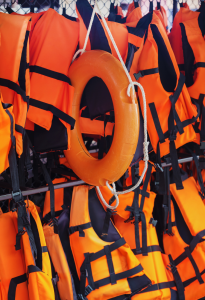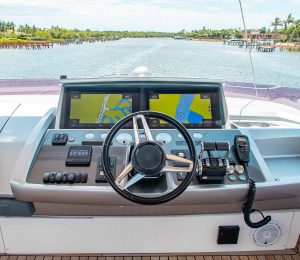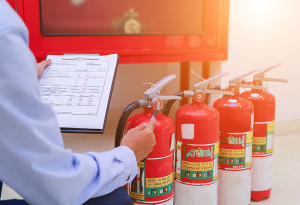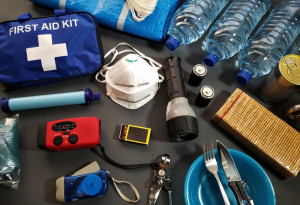Blog | Yacht Safety Checklist: Ensuring a Secure Voyage on the High Seas


Yachting is an exhilarating and luxurious way to explore the vast expanses of the open sea. However, safety should always be a top priority to ensure a smooth and secure journey. Whether you are a seasoned captain or a novice yacht enthusiast, adhering to a comprehensive safety checklist is vital. In this article, 26 North shares essential yacht safety measures to help you embark on a worry-free and enjoyable voyage.

The first and foremost consideration is personal safety equipment. Every passenger on board must have a properly fitting PFD ( personal floatation device) readily available. Ensure that you have a life jacket for every passenger, and make sure they are in good condition. Boats 16 feet and longer must be equipped with one Type I, II, III, or V personal floatation device (PFD) plus one Type IV throwable device.

Accurate navigation and effective communication are crucial aspects of yacht safety. Equip your yacht with up-to-date paper and electronic nautical charts, ensuring they cover your cruising area. Familiarize yourself with the charts and use them in conjunction with reliable navigation tools such as a GPS and compass. Verify that these instruments are in proper working order before setting sail.
Having a VHF marine radio on board is essential for communication and emergency calls. Make sure you have fresh batteries and know how to operate the radio effectively. In case of distress, this reliable communication device can be a lifesaver, enabling you to reach out for assistance promptly. If you boat offshore, or in areas that are not transited regularly by other boaters, you really should strongly consider purchasing an EPIRB. An emergency position-indicating radio beacon is a type of emergency locator beacon for commercial and recreational boats, a portable, battery-powered radio transmitter used in emergencies to locate boaters in distress and in need of immediate rescue. Familiarize yourself with the appropriate distress signals required for your location and carry the required equipment, such as flares, horns and SOS beacons.

Fire can be catastrophic on a yacht due to the enclosed space and limited escape routes. Prioritize fire safety measures to mitigate risks:
Install fire extinguishers in key areas of the yacht. The US Coast Guard has regulations regarding the number of fire extinguishers, installation locations and types required. Find the requirements on the US Coast Guard website. Regularly inspect and maintain them to ensure they are functional and within their expiration dates. In addition, implement fire prevention practices, including proper storage and handling of flammable materials, regular maintenance of electrical systems, and regular inspection of fuel lines and connections.
Install smoke detectors in critical areas of the yacht to provide early warnings in the event of a fire.
Develop an emergency plan and conduct regular fire drills with all passengers, ensuring everyone knows the location of emergency exits and firefighting equipment.

In addition to personal safety equipment, there are several other safety items that should be present on your yacht:
Carbon monoxide detector: Carbon monoxide detection in boats is paramount for your safety. Boats are confined spaces which quickly become gas chambers if carbon monoxide leaks in the cabin, sleeping quarters, or cockpit. Carbon monoxide can also accumulate in the stern of the boat. Per USCG recommendation, nstall CO detectors in each cabin. It’s the most effective defense against a potentially fatal problem.
First aid kit: Carry a well-stocked first aid kit that includes essential medical supplies, medications, and instructions for emergency medical procedures.
Distress signals: Familiarize yourself with the appropriate distress signals required for your location and carry the required equipment, such as flares or an emergency beacon.
Bilge pumps: Ensure that all bilge pumps on your yacht are functioning to remove water from the hull in case of leaks or flooding.
Prioritizing safety is paramount when embarking on a yacht voyage. By following a comprehensive safety checklist, you can minimize risks and ensure a secure and enjoyable experience for everyone on board. Always be prepared, stay vigilant, and keep your safety equipment in top condition. Remember, a well-prepared and safety-conscious approach will allow you to fully enjoy the beauty of the seas while providing peace of mind. Our team of experts at 26 North Yachts is here to assist you when you purchase your next vessel so you can have a safe voyage.